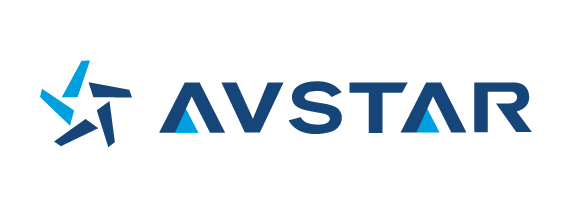Why Most Cleaning Businesses Waste Hours on Scheduling (And How to Fix It)

Strong 8k brings an ultra-HD IPTV experience to your living room and your pocket.
Effective scheduling is the backbone of any successful cleaning business. It ensures the right team members are assigned at the right time, client appointments are honored, and resources are optimally utilized. Yet, surprisingly, many cleaning companies spend countless hours drowning in manual scheduling, last-minute reschedules, and communication chaos — all of which eat into profitability and staff morale.
If your business finds itself bogged down by scheduling struggles, you're not alone. The good news is, this is a fixable problem. By understanding the common pitfalls and leveraging cleaning software, you can reclaim your time, improve efficiency, and deliver a superior customer experience.
The Hidden Costs of Traditional Scheduling Methods
1. Manual & Paper-Based Scheduling
Most cleaning businesses start with calendars, spreadsheets, or even sticky notes. While simple initially, manual methods quickly become overwhelming as your operation expands.
Problems include:
Double bookings or missed appointments.
Difficult tracking of staff availability and skill sets.
Limited visibility — managers can’t see at a glance who’s assigned where.
Inefficient communication — often relying on phone calls or emails to confirm shifts.
Last-minute changes causing chaos and staff frustration.
2. Disconnected Communication Channels
Without integrated tools, communication between office managers and field staff is fragmented:
Staff may not receive promptly updates about new jobs or schedule changes.
Clients may experience delays or cancellations due to mismanaged bookings.
Repeated manual communication efforts drain valuable administrative time.
3. Last-Minute Rescheduling & No-Shows
Unforeseen circumstances (like staff illness or emergencies) lead to scramble, missed appointments, and unfulfilled client expectations. Handling these manually is time-consuming and error-prone.
4. Lack of Optimization
Traditional methods rarely optimize for efficiency:
Staff may be assigned to jobs far apart, wasting travel time.
No insight into staff skills, resulting in misassignments.
No way to analyze busiest times, leaving revenue on the table during peak periods.
Why Most Cleaning Businesses Waste Hours on Scheduling
1. Reliance on Outdated Systems
Using manual methods (call-ins, spreadsheets, paper logs) is inherently slow and susceptible to human error. These systems lack automation, real-time updates, or mobile access.
2. No Centralized Scheduling Platform
Multiple team members or locations often manage schedules independently, leading to overlaps and miscommunications. Without a unified platform, coordination becomes inefficient.
3. Poor Visibility & Collaboration
Managers can’t quickly see who is available or where staff are located. Staff are left uncertain about their assignments, leading to confusion and downtime.
4. Reactive instead of Proactive Planning
Without data insights, many businesses only respond to scheduling issues after they happen — chasing staff, rescheduling clients, or dealing with complaints — wasting even more hours fixing problems.
5. Limited Staff Flexibility
Manual schedules don’t adapt well to last-minute changes, leading to gaps in coverage or overstaffing. Handling shift swaps or urgent cancellations becomes a hassle.
How to Fix Scheduling Wastage with Cleaning Software
The solution? Invest in cleaning software designed specifically to optimize scheduling, communication, and resource management. Here’s how a good cleaning software can dramatically reduce wasted hours and increase operational efficiency:
1. Automate and Optimize Scheduling
Modern cleaning software offers intelligent scheduling features:
Auto-assign: Allocate jobs based on proximity, staff skills, availability, and workload.
Templates & Recurring Schedules: Quickly set and repeat regular appointments.
Conflict Detection: Alert you of double bookings, overlaps, or staff overassignment.
Drag-and-Drop Interface: Adjust schedules easily with visual tools.
Benefits:
Limits manual entry.
Reduces scheduling errors.
Saves hours spent coordinating shifts.
2. Centralized, Mobile-Friendly Platforms
Field staff can access schedules via mobile apps, receive instant updates, and confirm their attendance:
No more missed messages or calls.
Real-time updates keep everyone aligned.
Staff can confirm or request shift swaps directly through the app.
Benefits:
Immediate communication reduces last-minute chaos.
Staff know their assignments well in advance.
3. Smart Route Planning & Dispatch
Some cleaning software includes route optimization:
Assign jobs geographically close to each other.
Reduce travel time, fuel costs, and staff fatigue.
Allocate staff efficiently during busy periods.
Benefits:
Increased productivity.
More jobs completed per day.
4. Dynamic Rescheduling & Cancellations
Accidents happen, or last-minute cancellations occur. With modern cleaning software:
You can swiftly reassign jobs to available staff.
Send instant notifications to affected employees.
Notify clients promptly about changes, maintaining professionalism.
Benefits:
Minimize downtime.
Maintain customer satisfaction.
Reduce hours spent on manual scrambling.
5. Data-Driven Scheduling & Performance Insights
Advanced cleaning software often includes analytics:
Understand peak hours and busy days.
Track staff productivity and identify over- or under-utilized employees.
Optimize staffing levels based on historical data.
Benefits:
Make smarter decisions for future scheduling.
Improve revenue without overstaffing.
6. Streamlined Communication
Many cleaning software platforms have integrated messaging systems or notifications:
Send automated alerts about upcoming jobs or changes.
Allow staff to confirm their shifts or report issues directly via app.
Keep open communication lines to prevent misunderstandings.
Benefits:
Reduce email and phone follow-ups.
Empower staff to manage their schedules proactively.
Practical Steps to Transition from Manual to Automated Scheduling
Switching to a new system can seem daunting, but a strategic approach makes the process smoother.
Step 1: Assess Your Current Pain Points
Identify where most time is wasted—are you struggling with last-minute cancellations? Overlapping schedules? Staff no-shows?
Step 2: Choose the Right Cleaning Software
Look for features like:
Easy-to-use interface
Mobile access
Automated scheduling capabilities
Route optimization
Communication tools
Integration with invoicing and CRM (if needed)
Popular options include Jobber, ZenMaid, ServiceTitan, and Housecall Pro—each tailored for service-based businesses like cleaning.
Step 3: Train Your Team
Ensure your staff and managers are comfortable with the new system. Provide training resources, run pilot tests, and collect feedback.
Step 4: Migrate Existing Data
Import your current schedules, client info, and staff details into the new platform to avoid duplication of efforts.
Step 5: Pilot and Refine
Start small—perhaps with one team or region—and gradually expand as everyone adapts.
Step 6: Use Data & Feedback to Improve
Regularly monitor system analytics and gather staff input to optimize scheduling further.
The ROI of Modern Scheduling with Cleaning Software
While investing in software entails costs, the benefits often outweigh the initial expense:
Time Savings: Free hours previously spent on manual planning.
Reduced Errors: Fewer missed appointments or double bookings.
Increased Productivity: More jobs completed per day.
Happy Clients: Punctual, well-organized service boosts satisfaction.
happier Staff: Clear schedules and easy communication lead to higher morale.
Final Thoughts: Stop Wasting Hours, Start Growing
Manual scheduling may have served your cleaning business in its early days, but as your operations grow, inefficiencies become costly. The good news? Modern cleaning software is accessible, user-friendly, and tailored to streamline your scheduling processes.
By embracing automation, GPS routing, real-time communication, and data analytics, you’ll drastically reduce hours wasted on scheduling and focus more on expanding your business and delivering top-notch service.
Don’t let outdated methods hold you back. Invest in a reliable cleaning software solution today, and watch your operational efficiency soar!
Note: IndiBlogHub features both user-submitted and editorial content. We do not verify third-party contributions. Read our Disclaimer and Privacy Policyfor details.







